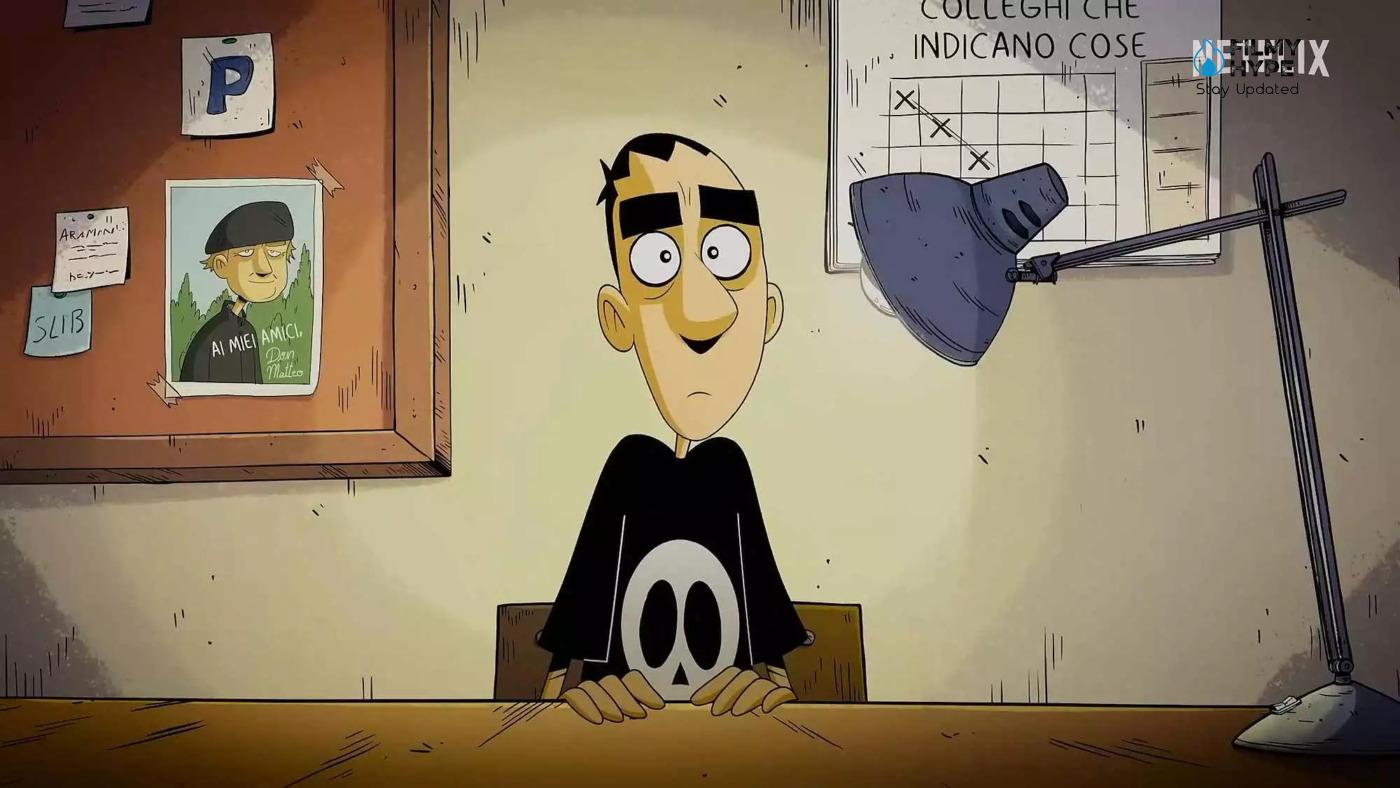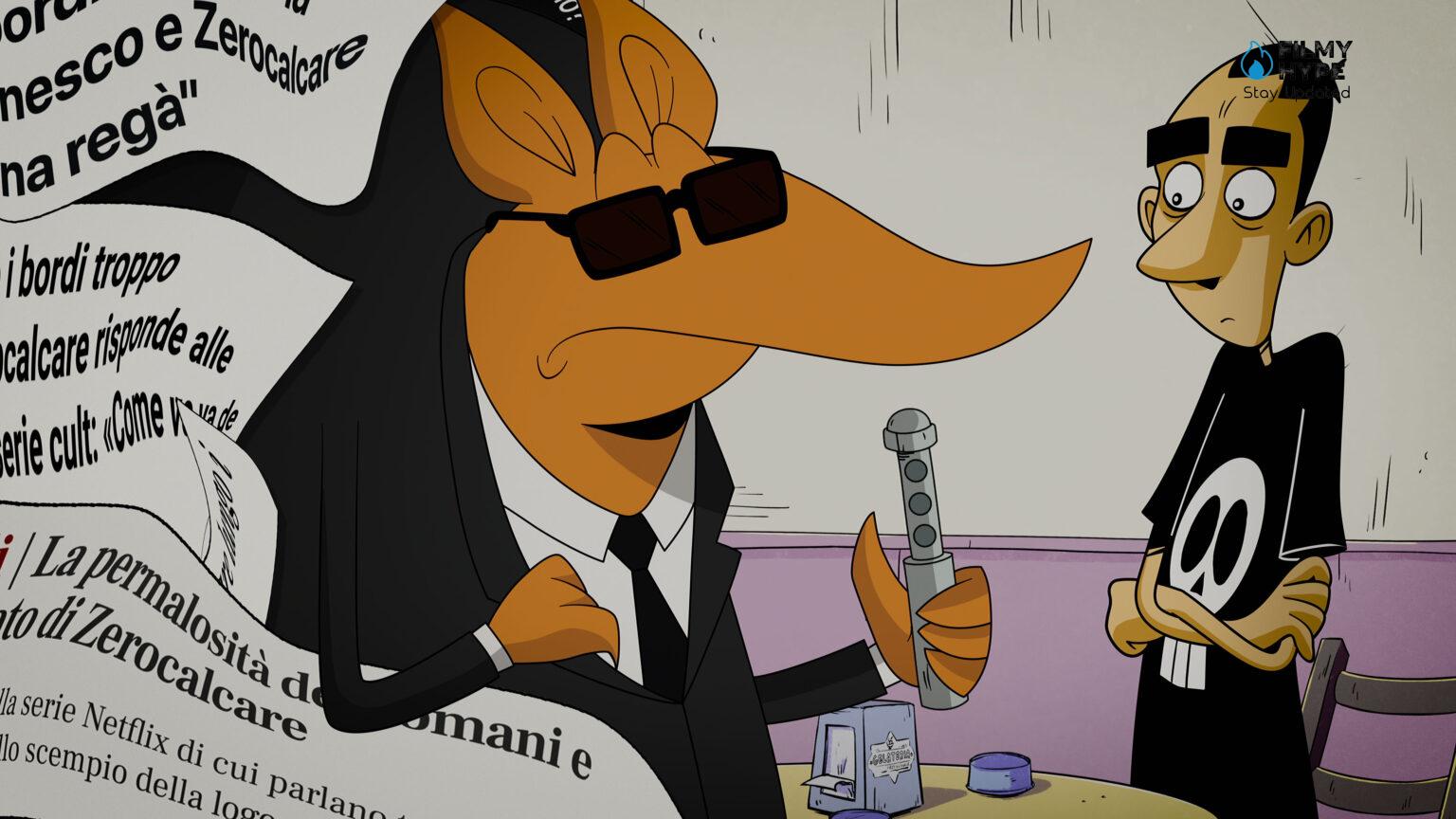This World Can’t Tear Me Down Review: Zerocalcare Once Again Proves To Be A Very Skilled And Rare Author
Cast: Zerocalcare, Valerio Mastandrea
Created: Zerocalcare
Streaming Platform: Netflix
Filmyhype.com Ratings: 4.5/5 (four and a half stars) [yasr_overall_rating size=”large”]
“This World Can’t Tear Me Down” is A line from a song that gives the Netflix series its title, but also a purpose. And making such a decision requires courage, especially when you’ve traveled the world a bit and you know how difficult it can be to remain “good” people in the face of injustices, abuses, and misfortunes various and possible which the aforementioned world puts us. in front of. This is the decision taken by Zero, alter ego of Zerocalcare, in the new Netflix series, available from June 9 with 6 episodes of animation produced once again by Movimenti Production, in collaboration with BAO Publishing and obviously of the big red N platform. Two years have passed since Tear Along the Dotted Line, the first animated series by Zerocalcare, yet very few seconds are enough, as soon as the first episode of this second work has begun, to feel at home again. Because the Zerocalcare phenomenon, which seems to be far from knowing signs of tiredness, in some way belongs to us.

The author is a character. More than one character is the voice of an entire generation. If Michele Rech’s career continues to seem unstoppable in the bookstore, we were quite curious to see how ours would be able to replicate the success of an animated series that had left an indelible mark on our collective imagination in recent years. Because you know, the second time is always more difficult. It is useless to hesitate as we will see in our review of This World Can’t Tear Me Down, the new six animated episodes of Zerocalcare (of which we have seen the first four) confirm and improve the excellent impressions of two years ago, giving us an author who seems more at comfortable with the medium, safer, more mature, even more fun and even more profound. Yet another center for an author who seems to be doing nothing wrong and who continues a path that is very coherent with his poetics, never losing sight of the heart of the story.
This World Can’t Tear Me Down Review: The Story Plot
The protagonists of this second animated adventure by the cartoonist from Rebibbia are once again Zero, Secco, and Sara. In a complicated social situation, in which the neighborhood is the scene of strong clashes (for the moment only ideological) regarding the legitimacy of a reception center near a school, Zero finds Cesare, an old friend of his who after many years in the community, returns home but struggles to find the rhythm. For his part, Zero, who in those years built a solid career making comics and distinguishing himself, despite himself, from the mass of reckless people in the neighborhood, would like to do something to help him, but he realizes that he no longer knows anything about what he once he was a close friend of hers.
Going back to animated frames with images and the unmistakable style of Zerocalcare is comforting. We are in a world that, however new and in many respects metaphorical, is familiar to us because, as in Tear Along the Dotted Line, we are faced with characters we first learned from comic strips. This World Can’t Tear Me Down is therefore a “friendly” territory for all those who love both Zerocalcare and its way of telling stories. Cesare, an old friend of Zero, returns to the neighborhood after several years of absence and struggles to recognize the world in which he grew up. Zerocalcare would like to do something for him but realizes that he is unable to help him feel at home again and make the right choice to find his place in the world. In the meantime, some migrants arrived in the neighborhood and were placed in a reception center, and this unleashed the reactions of the fascists in the area, and in turn the reaction of the other political party. The TVs ride the discontent. And Zero, who will have to be a guest on one of those television programs, feels compelled to say something.
This World Can’t Tear Me Down Review and Analysis
This second foray into Limestone-Verse brings with it a series of elements in favor of the large investment that Netflix, Movements, and BAO are making on this project. This World Can’t Tear Me Down is a refinement, from a technical point of view, of what has already been seen in Tear Along the Dotted Line. The animation has taken a step forward, implementing different techniques by organically mixing them and enhancing expressions and movements more, we also work more on abstraction, given that many of the best moments of the series (limited to the 4 episodes viewed) are set in corners of the mind, during the many brooding lucubrations of the character of Zero.

Inevitable is the character of the Armadillo (Valerio Mastandrea), who continues to be a moral compass for the protagonist and still with reality; the Armadillo is not only a counter-field of his consciousness, it is also that part of himself (very funny, I must admit) that always keeps him down to earth and at the same time offers the best meta moments – textual in which the character Zero and the author Zero coincide and speak directly to the public (the parenthesis on the diction is undoubtedly a very funny moment). The reference system of Zerocalcare is the popular one, shared, experienced, and loved by all its readers, a group so transversal and rich that the author himself struggles to understand it (it is plausible that many supporters of the far right are also avid readers of the pages of Zerocalcare). And perhaps for this very reason, he tries in his way to make himself understood by everyone, continually offering existential reflections on what is our place in the world, what is our role, and what are our choices.
However, this continuous hypotaxis of thought denounces a long-distance narrative incapacity; This World Can’t Tear Me Down reveals what is perhaps also the defect of Zerocalcare cartoonist. However dense and interesting what he tells is, it is always a question of small parentheses, attached to a narrative flow that is never really robust and interesting. It is more the individual tables that generate interest and participation than the volume as a whole. And unlike Tear Along the Dotted Line, which was the re-telling of The Armadillo Prophecy, the story of This World Can’t Tear Me Downseems to draw on much food for thought and visual concepts that the author has sown in many of his works (the “rubble” and the “octopus” will certainly be recognized), thus increasing the sensation of finding ourselves in front of a series of small stories, brackets, and short speeches, put together in a specious way. This certainly does not detract from the pleasure of immersing ourselves in Limestone-Verse, but at the same time, it denotes the limits relating to the ability to tell a story tout court.
Instead, what Zerocalcare manages to do well once again, perhaps best of all, is to give voice to the feeling of discomfort and inadequacy, the undisputed evil prince of our time. This World Can’t Tear Me Down speaks volumes about the difficulty of “remaining oneself amid life’s contradictions”; that’s what Zero tries to do, find Cesare, confront Secco, and argue with Sara. After all, this is what we all try to do, every day when we are faced with the risk of choosing the easy path rather than the right one. As obvious as it is, also in this case Zerocalcare doubles all the characters of the work (but the model remains that of the previous series, with the necessary surprises) except the armadillo, once again voiced by Valerio Mastandrea. The voice and the dialectic of Zerocalcare are part of the very writing of his story and it is impossible to separate the two elements. It is also a declaration of intent because it underlines more than once how the story is the result of its author’s vision of the world.
It is his inner voice, a stream of consciousness that is granted to us and that we are expected to listen to. This is why the moments in which Zero himself is forced to dub some dialogues hit hard. While on the screen two characters argue, argue, vent, and talk to each other, behind the scenes the person who gives voice to those dialogues is always only one. He almost had to exorcise those moments and could only do so by reliving them aloud, to make peace with himself, to overcome and digest them. And if our vision lacks only two episodes to understand if we are on the verge of perfection (for this we reserve the right to keep half a vote less), we can only applaud this very rare example of an out-of-the-ordinary talent who knows how to tell a story. His, which in some ways also becomes ours.
The formula that wins does not change. And how could it be otherwise? Zerocalcare’s style (comics and serials) remains the one that made him famous, with his imperfect language (a criticism made at the time of the first season which is answered here), quick words, and the transition between a comic and dramatic tone in a very short time. All while maintaining unchanged that miraculous balance (in rhythms, tones, limits imposed) of a perfect storyteller, which he is objectively incapable of resisting. With episodes that last twice as long as Tear Along the Dotted Line, one immediately perceives greater control and greater experience that animated the author, pushing him to raise – if possible – the qualitative bar even further.
The new story requires a broader breadth, a symptom of a necessary maturity, not at all obvious, but which the author has rightly claimed. Because, unlike the work of two years ago, This World Can’t Tear Me Down deals with more delicate issues, and exposes itself more, especially politically, risking dissatisfying part of the public who may have loved the previous series. We laugh a lot, but above all in a bitter way because, aware of being able to speak to an entire generation that suffers the same paternity as the protagonists, this time Zero doesn’t make any concessions. He throws himself into current events and criticizes the world around him and himself, but above all he questions himself. With a lucidity of gaze that surprises and which, although it has always been part of its author’s game, strikes more forcefully.
This World Can’t Tear Me Down: Final Words
Zerocalcare proves to be a storyteller capable of speaking to a vast audience and of identifying the raw nerves of several generations, poised between the inability to grow up and the awareness that time passes quickly and that one does not remain “kid” forever. This World Can’t Tear Me Down not only is a new piece in the Zerocalcare narrative universe that is perfectly consistent with the rest of its production, but it improves the previous series. With a perfectly narrated story, balancing the comic moments with the dramatic ones, Zerocalcare once again proves to be a very skilled and rare author, capable of speaking directly to and about an entire generation. A mature series, which can only be applauded.



